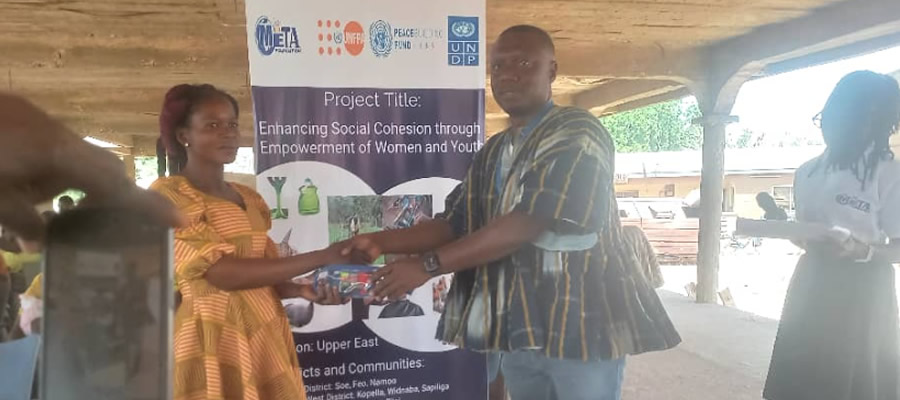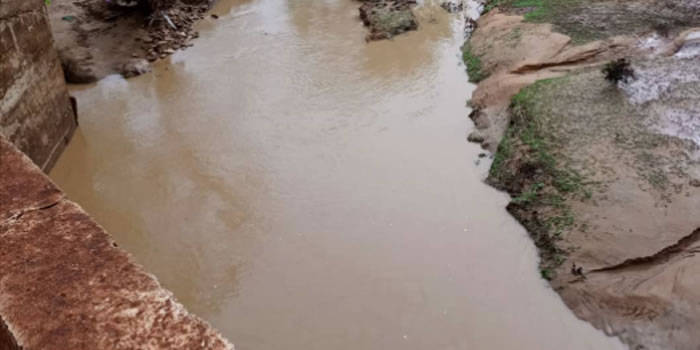

Water
Availability of potable water is essential for any socio-economic development. Access to potable water eliminates or minimizes considerably such debilitating water-borne diseases like cholera, diarrhoea, bilharzias and other diseases freeing many family to engage in income generating activities. If the above assessment is true, them availability of potable water can lead to increased productivity and raise the standard of living of the people in the district.
Boreholes and hand dig wells are the main source of potable water for the people. The table below shows the number of functional and non-functional boreholes in each of the seven Area Councils in the District.
The main Water and Sanitation Delivery Agency is the Community Water and Sanitation Project Phase-Two (CWSP-II) funded by the World Bank. However, the project has been replaced with the Community-Based Rural Development Project (CBRDP) to take care of the provision of point sources whilst the CWSP-II continues to deliver the Small Towns Water System.
Rural Aid, a British NGO, World Vision Ghana, European Union Micro-Projects Programme, Action Aid and the LACOSREP-II Projects have also provided quite a number of water and sanitation facilities in the District. The water delivery points in the District include boreholes, hand-dug wells fitted with pumps. Plans are also far advance to provide a Small Town Water System for the Bongo Township and its environs.
From the table above, there are 335 boreholes in all the seven Area Councils with 23 being non functional due to faulty parts. It must however be stated that 35 of the boreholes have been capped due to high fluoride content. This brings the functional borehole in the district to 275.
Population and other indicators were used to determine surface accessibility to potable water in the district. These indicators includes; distance covered to access potable water, time spent to access potable water and litres of potable water available per head.
The result of the survey using the above mentioned indicators are summarized in then table below: From the table above indicates that only 9% of the population in the district walk within 500m to access potable, which is a recommended distance for one to access potable. Again the table shows that only 11% of the entire population of the district have access to 35 litres of potable water a day.
When one uses population to determine accessibility to potable water in the district, the analysis indicates that about 65% of the population have access to potable water. However, when one uses distance and litres to determine surface accessibility, only 32% of the district population have access to potable water. The situation in the district is very devastating as portrayed in the above table.
It is therefore concluded that using distance and litres to determine accessibility to potable water give the true picture of situation in the district. This assertion is supported by the disperse nature of the settlement in the district. The above situation derails development since school children have to wake up very early and walk long distance to fetch potable. This usually leads to absenteeism and lateness to school.
Women in particular who are the main farm hands spend considerable length of time looking for potable for the family whiles farming activities suffer. This may lead to low productivity and production. In order not to let their economic activities suffer, they resort to using any available water source which brings about water borne diseases.
Besides, boreholes, a number of hand dug wells have been drilled in the district with support from Rural Aid, LACROSREP II and Action Aid Ghana. The communities on their own through self help constructed number of boreholes. On the whole, there are 240 hand dug wells in the district. Out of this about 150 have been provided with pumps. However, there is a perennial shortage of water in the wells especially during the long dry season. It can therefore not relied on as safe water source.
Capped Boreholes
Generally the underground water from which the district rely mostly for potable water is characterized with high fluoride the World Health Organization (WHO) recommends a maximum fluoride concentration of 1.5 (mg) in drinking water. Fluoride concentration beyond this limit can give rise to skeletal, no-skeletal or dental fluorosis.
A survey conducted by the Ghana Health Service in 1995 indicated that about 33% of the school children in the district suffer from dental fluorosis. The disease is prevalent among adults as well. The study revealed that about 62% of the children in Bongo Central suffer from the disease.
It therefore behooves on the Assembly to find the best way to reduce the high fluoride concentration in underground water. The District Assembly in collaboration with the Community Water and Sanitation Agency (CWSA) has contacted the School of Engineering of KNUST to research into the fluoride situation. It is also hoped that the construction of the small Town water system in Bongo and its envious will help solve the problem of flourisis in the District.
Sanitation
The overall effect of poor Sanitation in the district is manifested in health hazards such as malaria, skin diseases, tuberculosis and diarrhoea among others. Good sanitation and hygiene procures in the district is very low as portrayed in the table below . From the table above there 854 household latrines in the district serving about 23% of the population. The public place of Convenience ie. Septic tank latrine, KVIP latrine and Enviro-Loo toilet are only 16 in the whole district. The public toilets serve only 8% of the total population in the district.
On the whole, proportion of people who have access to safe excreta disposal facility in the district in only 31%. This means that about 69% of the population in the district use "free range". This situation brings a lot of diseased as mentioned above. This can also lead to low output which result in low productivity which eventually leak to low income and low standard of living.
Solid and Liquid Waste Management
Refuse disposal in the District is mainly crude duping. Almost all refuse generated from the houses are used as compost which the farmers apply on their farm. Be fuse generated from the market and other public places are used to reclaim lands. Normally sails are excavated for building proposes leaving the pits unfilled. As such refuse from the public places re used to fill these pits. Like liquid waste there is no final disposal sites for dry refuse disposal.
One major nuisance threatening the environment is the menace of polythene rubbers. These rubbers are scattered everywhere and it is visible during the dry season. There are no drains in any of the communities including the district capital to transport run-offs and sewerage from driveling units. The periodic flooding experienced during heavy downpours is a direct result of poor drainage.
Most bath house do not have bath horse drains or soak away and so the resulting stagnation of waste water from houses leads to the breading of mosquitoes and the spread of malaria. Another problem associated with sanitation is that here are no approved solid waste disposal of refuse and it attendants breeding of reptiles, germs and vermin.
The district lacks public cemetery which a serious issued under sanitation. All families rely on family cemeteries either in front or behind the family house. This practice is very serious especially where the cemetery is closer to potable source of water such as boreholes and hand-dug wells.
Food Hygiene
Prepared food sale is mostly carried out in make shift sheets. There are about three recognized chop bars and a restaurant in the district. The District has only one slaughter slab and a meet shop located in Bongo and soe. However, soe has no slaughter slab. Animals like pigs, donkeys and dogs are slaughtered in homes and on rocks and the carcasses prepare for sale.
Cattle, sheep and goats are slaughtered at the Bongo slaughter slab and the meet sold at the meat shop. The other Area Councils lack slaughter slabs and meet shop. However, Beo and Zorko markets are being provided with meat shop under the Community Based Rural Development project (CBRDP).
A survey conducted in the district on WATSAN Mapping under the Local Millennium Development 7 with support from Water Aid - Ghana, it came out clearly that over 90% of the people interviewed do not practice hand washing with soap before eating. This issue brings about a lot of diseases. There is therefore the need for all stakeholders such as GHS, DWST, and EHU .to intensity the campaign on hand washing with soap.
Drinage
The drainage system in the District especially the major towns is not the best. Most houses do not have sock aways and drains have also not been constructed along the major roads in the District to enable water run off especially when it rains.
This has exacerbated the already serious soil erosion experienced in the District. This situation can be ameliorated with the construction of drains along the major roads in the district as well as in residential areas. Households should be encouraged to construct soak-aways in their homes to enable water run-off easily after use.
The Department of Feeder roads could take up the aspect of the drains whilst the Environmental Health Unit steps up its monitoring visits to households to ensure that drains are properly constructed and those without drains are encouraged to do so.
There are seven (7) permanent conservancy labourers and one (1) casual labourer. The permanent refuse labourers are four(4) and two (2) are casual labourers The Refuse dumps in Bongo and Soe are sited in the markets.
The Assembly took delivery of six (6) refuse containers. These containers have been placed in the market squares of Bongo, Beo, Soe, Zorko and one at the Gowrie quarters. Refuse collected from the market squares are stored in the containers. When they become filled up, a tractor goes round to pick them and dispose the refuse at some farms upon request from farmers.
Date Created : 11/18/2017 7:06:24 AM











 facebook
facebook
 twitter
twitter
 Youtube
Youtube
 +233 593 831 280
+233 593 831 280 0800 430 430
0800 430 430 GPS: GE-231-4383
GPS: GE-231-4383 info@ghanadistricts.com
info@ghanadistricts.com Box GP1044, Accra, Ghana
Box GP1044, Accra, Ghana